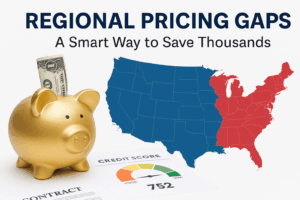Most buyers see end-of-quarter discounts as a lucky break. The truth is that these price drops are not random. They are part of a structured system that reflects how dealerships balance inventory, incentives, and financial targets. Understanding what these discounts reveal about dealer strategy can help you negotiate more effectively and avoid being swayed by surface-level savings.
Why Dealers Suddenly Get Flexible at the End of a Quarter
Dealerships operate on financial calendars. Each quarter, sales managers are tasked with hitting volume targets set by manufacturers. These targets are not just about moving cars. They are tied to bonuses, rebates, and performance-based rewards. If a dealer is close to hitting a target, they may be willing to sacrifice margin on individual sales to secure the larger payout.
This is why the final weeks of March, June, September, and December are often the most aggressive periods for discounts. Dealers are not simply trying to clear space. They are trying to unlock financial rewards that depend on hitting specific numbers.
How Volume Targets Turn Into Buyer Leverage
Volume bonuses are structured in tiers. A dealership might receive a payout for selling 100 vehicles in a quarter, but a much larger payout if they reach 120. That gap creates urgency. If a dealer is sitting at 115 sales with a few days left, they may be willing to cut deeply into margins to close the gap.
For buyers, this creates leverage. The closer a dealer is to a target, the more flexible they become. A savvy buyer who times their purchase correctly can secure a better deal than someone who walks in earlier in the quarter when the pressure is lower.
When Inventory Pressure Collides with Deadlines
End-of-quarter discounts are not just about hitting sales numbers. They are also about managing inventory. Dealers do not want to carry excess stock into the next quarter. Unsold vehicles tie up capital, increase floor plan financing costs, and reduce flexibility for incoming shipments.
When financial deadlines and inventory pressure collide, discounts become sharper. A dealer who needs to move specific trims or colors may offer targeted incentives that are not available earlier in the quarter. Buyers who are flexible on features or willing to consider less popular configurations can benefit the most.
Why Certified Pre-Owned Deals Get Sweeter Too
It is not only new cars that are affected by quarter-end pressure. Certified pre-owned deals often become more attractive during these periods as well. Dealers use pre-owned inventory to pad sales numbers and improve cash flow. By discounting certified vehicles, they can move units quickly while still presenting the purchase as a value-driven option for buyers.
For shoppers, this means that quarter-end is not just a good time to buy new. It is also a strong window to explore certified pre-owned inventory, where discounts may be paired with extended warranties or financing incentives.
How Seasonal Promotions Blend with Quarterly Cycles
Quarter-end timing often overlaps with seasonal shifts. For example, the end of June coincides with summer promotions, while the end of December aligns with year-end clearance events. Dealers use these overlaps to amplify urgency. They frame the discounts as seasonal opportunities, but the real driver is the financial calendar.
Recognizing this overlap helps buyers separate marketing from strategy. The banners may say “holiday savings,” but the real reason for the discount is the dealer’s need to hit a quarterly target.
Not Every Discount Is What It Seems
It is important to note that not all quarter-end discounts are created equal. Some are genuine margin sacrifices tied to volume bonuses. Others are simply marketing tactics designed to create urgency without offering meaningful savings.
The key is to compare offers across multiple dealers. If one dealership is offering a significantly deeper discount than others, it is likely tied to their specific position relative to a target. That is where the real opportunity lies.
How to Turn Dealer Urgency Into Your Advantage
The smartest buyers treat quarter-end shopping as a strategic exercise. They research inventory levels, compare regional offers, and time their negotiations for the final days of the quarter. They also remain flexible on trims, colors, and even model years, knowing that the best discounts often apply to vehicles the dealer is most motivated to move.
By approaching the process with clarity, buyers can turn dealer urgency into buyer leverage. The goal is not just to save money but to align your purchase with the structural forces that shape dealer behavior.
End-of-quarter discounts are not random acts of generosity. They are signals of dealer strategy, shaped by financial targets, inventory cycles, and manufacturer incentives. By reading these signals, you can negotiate from a position of strength and avoid being swayed by surface-level marketing.
The next time you see a quarter-end promotion, remember that it is not just about you getting a deal. It is about the dealer hitting a number. If you understand that, you can turn their urgency into your advantage.




